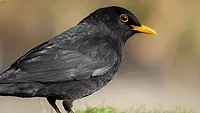Researchers Developing Food Safety Risk Assessment for Wild Birds in Agriculture

Credit: gtutt (gtutt-13340366) via Pixabay
To help growers mitigate food safety risks posed by wild birds, an ongoing study funded by the Center for Produce Safety is examining the prevalence of different species in agriculture and whether they carry and transmit foodborne pathogens. The end goal is to use the findings to develop a holistic food safety risk assessment for wild farmland birds, including a photographic guide to help growers identify birds and the potential food safety risks they may pose under different contexts.
The research is led by ecologist Daniel Karp, Ph.D., with the University of California, Davis. Microbiologist Jeffery McGarvey, Ph.D., of the U.S. Department of Agriculture’s Agricultural Research Service (USDA’s ARS) is taking the lead on the project’s molecular work.
The study was inspired by conversations Dr. Karp held with growers, who expressed uncertainty about the food safety risks posed by wild birds. The producers shared that, if they implemented an approximate 1-meter buffer around each feces found no matter the size, significant portions of their fields would have to be disked.
The study is focusing on species of birds that have been neglected in previous research, which mostly observe species that congregate in large flocks around animal feeding operations and refuse sites. Little is known about the risks posed by many other bird species that are frequently found in or flying over farmland, such as swallows or bluebirds.
The research team are working with 20 California farming operations that allowed access to their fields to survey for feces and capture birds using mist nets. The study is three-part. One part of the project involves capturing birds, identifying the species, and collecting fecal samples to assay for Campylobacter, Salmonella, and Shiga toxin-producing Escherichia coli. Additionally, researchers will conduct fecal transects, which involve searching for feces in an established area for sampling.
For the third part of the project, the researchers inoculated about 200 fecal samples from wild turkeys and Western bluebirds with E. coli in experimental field plots. The samples were placed on bare soil, plastic mulch, and lettuce leaves to determine pathogen survivability in different field conditions.
Preliminary results found both fecal size and substrate type affected how quickly pathogens died, with the microbes dying faster in the smaller fecal samples. Pathogen survival also was lower on soil and plastic mulch than on lettuce leaves.
Dr. Karp plans to develop a holistic food safety risk assessment for farmland birds using the study’s findings, keeping in mind instances in which birds might benefit crops, such as by feeding on insects and other pests. For example, since the study’s early results have demonstrated that that small insect-eating birds produce small feces that are not conducive to pathogen survival, farmers might be able to mitigate high-risk bird species while taking advantage of the benefits presented by small birds, if further research confirms the low food safety risk of small birds.
Looking for quick answers on food safety topics?
Try Ask FSM, our new smart AI search tool.
Ask FSM →









